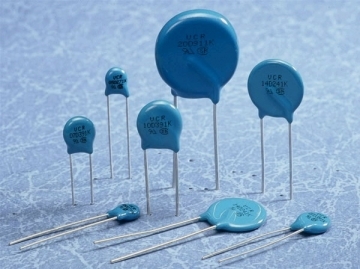News
- 2014-08-18 15:46:21
-

Metal Oxide Varistor
Metal oxide varistor is the most common type of varistor. We are one of the leading manufacturer of varistor. Our meatal oxide varitor contains a ceramic mass of zinc oxide grains, in a matrix of other metal oxides (such as small amounts of bismuth, cobalt, manganese) sandwiched between two metal plates (the electrodes). Our products are with high quality which can guarantee your quality life.
Metal Oxide Varistor is called so as the component is made from a mixture of zinc oxide and other metal oxides like cobalt, manganese and so on and is kept intact between two electrodes which are basically metal plates. MOV’s are the most used component to protect heavy devices from transient voltages. A diode junction is formed between each border of the grain and its immediate neighbour. Thus an MOV is basically a huge number of diodes that are connected parallel to each other. They are designed to be in the parallel mode as it will have better energy handling ability. But, if the component is meant for providing better voltage rating, it is better to connect them in series.
A reverse leakage current appears across the diode junctions of each border when an external tiny voltage is applied across the electrodes. The current produced will also be very small. But, when a large voltage is applied across the electrodes, the diode border junction breaks down as a result of the combination of electron tunnelling and avalanche breakdown. Thus the device is said to show a high level of non-linear voltage – current characteristics. From the characteristics, it should also be noted that the component will have low amount of resistance at high voltages and high resistance at low voltages.
The only problem with this component is that they cannot withstand the transient voltage more than the exceeded rating. They tend to deteriorate after a certain level. If so, they will have to be replaced at times. When they absorb the transient voltage they tend to dissipate it as heat. When this process continues repetitively for some time, the device begins to wear out due to the excessive heat.
They can be connected in parallel for increased energy-handling capabilities. MOVs can also be connected in series to provide higher voltage ratings or to provide voltage rating between the standard increments.
- Previous [Return Home] [Print] [Go Back] Next
Contact Us
Contact Person:
Miss Li MeizhenTel:
86-769-82825339- 82825369
- 18929453899
Fax:
86-769-82829959Email:
nanalee.mc@163.com


